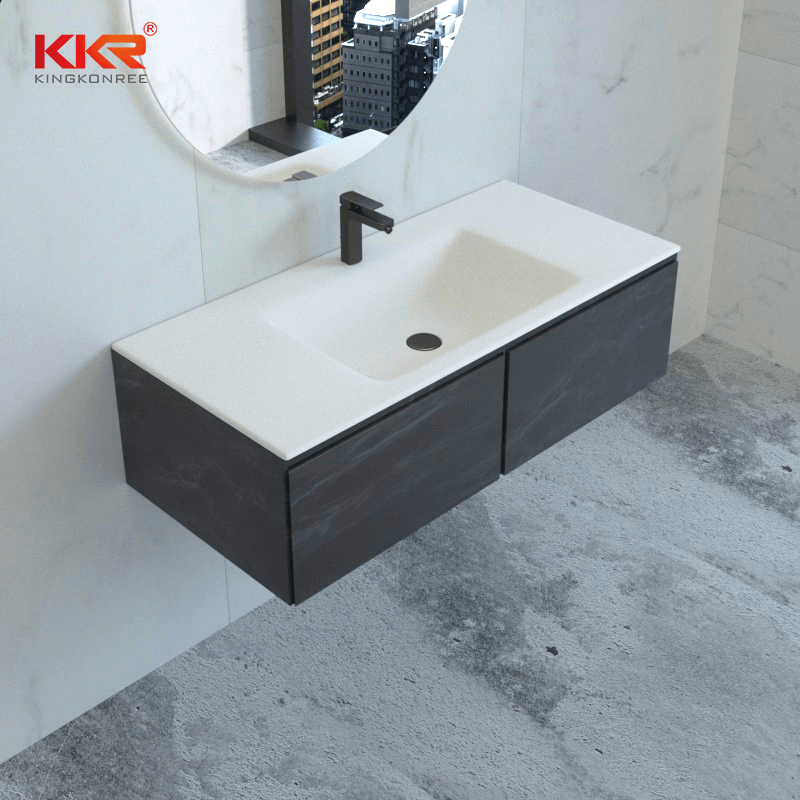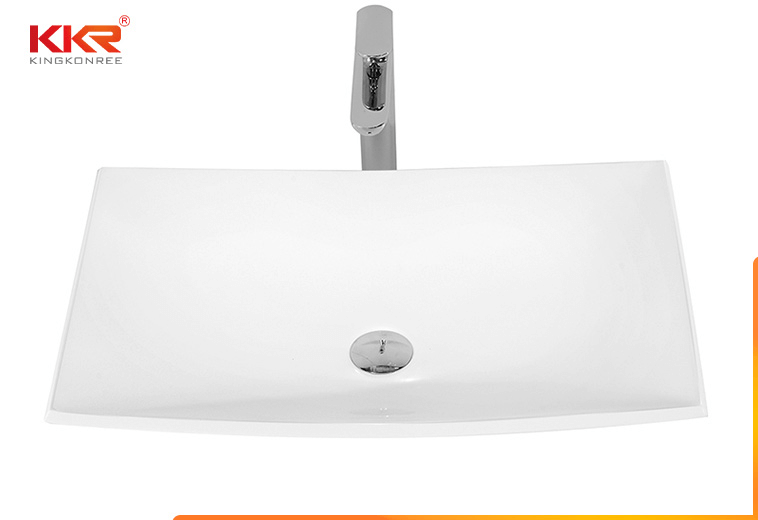Sinks are important house components that offer numerous functions. If located in the kitchen, they can be used for doing dishes or washing food items. If located in the bathroom, the sink can be used for grooming.
Like every other sink material, Corian sinks require proper maintenance to preserve their beautiful features, or else they easily damage. This article will guide Corian sink users or ‘to be owners’ on how to clean a Corian sink.

Understanding of Corian Sinks
Corian sinks can be very beautiful and add some exquisite touch to kitchens (Learn: Kitchen Sink Sizes in Inches-How to Choose the Right Sizes) or any countertop they are fitted on.
Now let us go deep into the material compositions and features of Corian sinks below.
The Material Composition of Corian Sinks
Most Corian sinks are made up of acrylic resin, inert fillers, minerals, and pigment for coloring. The inert fillers such as aluminum trihydrate used in producing Corian sinks give the solid surface its overall strength and resistance.
Also, Corian sinks contain an acrylic resin which serves as the binding agent of the solid surface. It holds together all other materials used on the solid surface while providing a non-porous surface.

Features of Corian Sinks
Corian sinks possess numerous features that make them a valuable preference for realtors, new homeowners, or remodelers. The features include durability, stain resistance, and antibacterial properties.
Durability
The stain-resistant, and water-resistant nature of corian sinks will make them more durable than cast iron sinks or any other sink that is affected by moisture.
Also, Corian sinks are designed to provide some level of resistance to impact and shock, and also some light chemicals or alkalis they can come in contact with. This feature has made it a staple sink choice for many households and commercial places where they can be exposed to all kinds of uses.

Antibacterial Property
Although Corian sinks are not inherently antibacterial, they possess features that make them hygienic and free of microbial growth. Corian sinks are made of solid, non-porous materials that are not suitable for breeding bacteria.

Common Problems Faced While Cleaning Corian Sinks
It is important to learn how to clean Corian (Learn: Corian vs Granite: A Comparison to 8 Important Differences) sink stains. This will help keep the sink in good shape even after years of usage.
Stain Residue
One of the common problems corian sink owners and users are likely to face while cleaning is noticing stain residues on their sink. Although corian sinks have stain resistance, some stains probably won’t go if they are not cleaned the right way.
Residual stains can be caused by different factors which include the hardness of water, water leaks, condensation, and spills.
Water Spots and Soap Scum
Water spots and soap scum are common problems encountered while cleaning Corian sink.
The water spots noticed on the sink after washing can be the residue of the water used in rinsing the sink that has not properly dried or mineral deposits on the sink. While soap scums are evidence of a buildup of soap residue that has not been washed off.
To remove water spots, wet a soft cloth with a water-vinegar mixture and gently scrub the affected area. Rinse with warm, clean water to remove any residue. For soap scums, use a non-abrasive cleaner with a soft wipe cloth and gently scrub the affected area. Rinse with water to wash off any residue.
Scratches and Scuffs
Using metals on Corian sinks will create tiny cracks, scratches, and scuffs that give room for further damage.
To prevent further scratches on the Corian sinks, avoid using sharp objects, metallic sponges, or abrasive cleaners. Rather opt for a cutting board during cooking and use soft cotton wipe clothes and non-abrasive cleaners during cleaning.
How to Clean Corian Sink Step by Step
Although other kinds of sinks are simple to clean, Corian sinks are a little different. Here are several tips on how to clean the Corian sink.
Prepare the Supplies
Before cleaning, prepare the necessary cleaning supplies you may need. These supplies include mild detergent, sponge, paper towels, non-abrasive cleanser, soft wipe clothes, and ammonia-based cleanser. The supplies should not be hard enough to damage the surface of the sink.
Preparing the supplies and keeping them within arm’s length allows you to fully focus on the cleaning without diverting.
Rinse the Sink
Some dirt might have stuck to the sink and dried. If they are washed immediately, it can lead to scratches and scuffs. Because of this reason, the first thing to do after preparing the supplies is to rinse the sink with warm water. And leave for a few minutes.
This will allow the sticky and dried dirt on the sink to be softened and easily removed.
Clean the Sink Surface
After rinsing the sink, it’s time for a proper cleaning.
Clean the sink surface and every exposed part with wipes or soft clothing materials. A regular cleaning agent can be used to clean the sink surface. It will take out the dust, dirt, and stains that are not so stubborn.
Deal with Stubborn Stains
If there are stubborn stains, use baking soda mixed with hydrogen peroxide as a substitute for bleach. These two ingredients should be combined to create a paste. Apply the paste to the sink stains, cover it with a dry rag, and let it sit for a few hours. Then, rinse with warm water and wipe dry.
Alternatively, you can use dish soap and baking soda. To prevent baking soda from dissolving on a wet sink, first, make sure your Corian sink has been well-dried. Then sprinkle a small amount of the powder in the sink, add a few drops of dish soap, and then scrub the spots thoroughly with an abrasive scouring pad.
Buff Out Scratches
Sandpapers are helpful for blurring out scratches from the surface of the sink. After buffing out the scratches with sandpaper, colored pigment suitable for the Corian sink can be used to refill the affected area.
This process will make it look like there has never been a scratch on that surface.
Rinse and Dry
Clean water should be sufficiently used to rinse off the soap residue, while a neat cotton clothing material should be used to absorb the residue water. In addition, a moist clothing material should also be used to apply cream cleanser on the corian sink to keep it sparkling.
Customize Easy-to-Clean Solid Surface Sinks
KKR is a very reliable solid surface manufacturer. We manufacture non-porous and beautiful customizable solid surface countertops, washbasins, bathtubs, acrylic solid surface sheets, and other finished goods on demand.
KKR is ISO 9001:2015 certified and also adheres to worldwide standards in the manufacturing of sinks. We offer the following:
Non-Porous Material for Sinks
KKR produces non-porous, solid surface and finished products. We do this with the aid of our sizable dust-removal machines that ensure that all KKR sinks are of the highest quality. This guarantees our users of durable sinks that will last for a long time, allowing everyone to get value for their money.

Color Fastness
Our wash basins and sinks are made using only the finest resins, which ensures their durability and enduring beauty. We’ve put in work to give our products exceptional finishes that will prevent them from degradation and make them beautiful all year round.
When you purchase your products from KKR, you do not have to worry about fading and yellowing of your Corian sinks.
Conclusion
Following the right steps on how to clean a Corian sink is the right way to get the best from the sink and prolong its lifespan. Cleaning the wrong way will expose your sink to stain residues, water spots, and even scratches.
KKR offers the best available solid surfaces, sinks and basins, bathtubs and accessories, countertops and vanity tops, and solid surface sheets. In addition, we offer customization services to offer you the exact product you need.
Get in contact with a KKR representative today!



